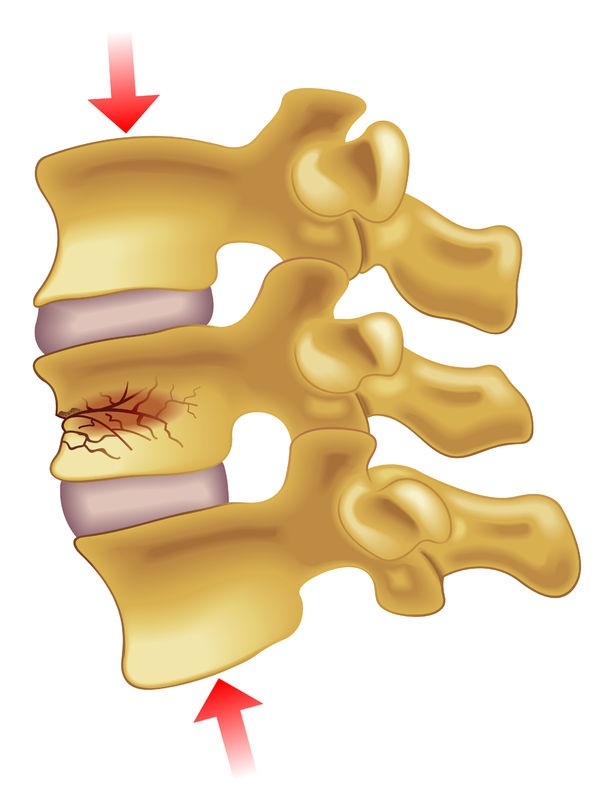Full Description
Spine fractures can occur at any segment of the spinal column. The spinal column is made up of multiple vertebrae. Fractures can involve the vertebral body or the posterior elements of the spine. The posterior elements form the back wall of the spinal canal and provide protection for the spinal cord. Spinal fractures can happen from something as dramatic as a fall or motor vehicle accident, or, in a patient with osteoporosis, from a simple movement like coughing or reaching overhead. Osteoporosis, or loss in bone quality, makes the vertebrae vulnerable to vertebral compression fractures. The pain from an osteoporotic fracture is not always severe – sometimes it is mild. Many people mistake these spinal fractures for backaches, which they assume are just part of getting older. The primary symptom seen in compression fractures is moderate to severe back pain that is made worse by movement.
Screening and Diagnosis
The first step in the evaluation of spinal fractures is to get a detailed history about what caused the injury. The doctor will perform a physical examination. This may include checking for swelling, bruising, tenderness and other signs of injury to the head, abdomen and back as well as evaluating strength, motion and alignment of arms and legs. A neurologic examination may also be done. This may include tests of motor (muscle strength) and reflex functions of the nervous system. In addition, x-rays may be necessary to look for fractures or dislocations. Often computed tomography (CT) or magnetic resonance imaging (MRI) scans may be ordered to determine the extent of injury.
Treatments for Spinal Fracture
Treatment goals include protecting nerve function and restoring alignment and strength of the spine. Treatment options are based upon the type of fracture and other factors. Non-surgical treatment options include wearing a brace for sitting and standing activities for 6 to 12 weeks. Patients should walk and do other exercises while healing and may take medications for pain. Depending on the symptoms and the type of fracture, surgery may be an option. For some fractures, metal screws and rods or plates may be used to realign the spine. For osteoporotic fractures, vertebroplasty or Kyphoplasty may be performed. These are minimally invasive procedures in which a bone cement is injected into the fractured vertebrae. It is important to discuss treatment options with your doctor in deciding which treatment, if any, may be best for you.


